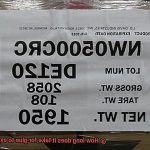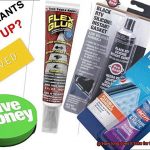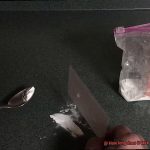Styrofoam – the lightweight wonder of the crafting world. It’s like a blank canvas, ready to be transformed into something extraordinary. But when it comes to sticking those pieces together, finding the perfect adhesive can be a real head-scratcher. That’s where the superhero of glues swoops in – Gorilla Glue. Renowned for its Herculean strength and unmatched versatility, this glue means business.
But here’s the million-dollar question: just how long does it take for Gorilla Glue to dry on Styrofoam? Well my friend, in this blog post, we’re diving deep into the fascinating process of how this mighty adhesive forms an unbreakable bond with Styrofoam. We’ll also explore all those sneaky factors that can affect drying time, so you’ll never be caught off guard again.
So grab a seat and get ready to uncover the sticky secrets of Gorilla Glue and Styrofoam.
What is Gorilla Glue?
Contents
- 1 What is Gorilla Glue?
- 2 How Long Does Gorilla Glue Take to Dry on Styrofoam?
- 3 Factors Affecting Drying Time
- 4 Recommended Application Instructions
- 5 Too Much Glue Can Prolong the Drying Time
- 6 Temperature and Humidity Impact Drying Time
- 7 Proper Ventilation Can Help Speed Up the Process
- 8 Allow Adhesive to Fully Dry Before Applying Pressure or Handling
- 9 Conclusion
Gorilla Glue is a polyurethane adhesive that is renowned for its exceptional strength and versatility. It is specifically designed to bond a wide range of materials together, including wood, metal, stone, ceramic, and even Styrofoam. Whether you’re repairing broken pottery or constructing a wooden structure, Gorilla Glue can provide the strong and durable bonds you need.
One of the key characteristics of Gorilla Glue is its ability to create strong molecular bonds. When the glue comes into contact with moisture, it forms a powerful bond that can withstand significant stress and strain. This makes it ideal for use on porous surfaces like Styrofoam, where it can create a durable connection.
Gorilla Glue is not only strong but also waterproof. It can resist exposure to moisture without compromising its adhesive properties. This means that it is suitable for both indoor and outdoor projects, providing reliable and long-lasting bonds even in wet conditions.
The versatility of Gorilla Glue is another reason for its popularity. It is available in different forms such as liquid, gel, and tape, offering options for various applications. The liquid form is commonly used by spreading a thin layer onto the surfaces to be bonded. The gel form is thicker, making it suitable for vertical applications or working with porous materials like Styrofoam. The tape form provides an easy-to-use option for bonding surfaces together without the need for clamps or other tools.
When using Gorilla Glue on Styrofoam, it’s crucial to apply a thin layer of the adhesive to avoid excessive expansion. Styrofoam is lightweight and porous, so too much glue can cause damage. Applying a thin layer allows the glue to bond without harming the Styrofoam.
How Long Does Gorilla Glue Take to Dry on Styrofoam?
When it comes to bonding Styrofoam with Gorilla Glue, a little patience goes a long way. Styrofoam’s porous nature absorbs moisture, which can prolong the drying time of the glue. In this article, we’ll explore the factors that influence drying time and provide tips to ensure a strong bond between Gorilla Glue and Styrofoam.
Factors Affecting Drying Time:
- Porosity: Styrofoam’s porous structure means it absorbs moisture, which slows down drying. This is why Gorilla Glue takes longer to dry on Styrofoam compared to other materials.
- Temperature and Humidity: Both temperature and humidity affect drying time. Higher humidity levels increase drying time, while lower levels promote faster drying. Keep this in mind when planning your project.
Drying Time Guidelines:
On average, Gorilla Glue takes anywhere from 1 to 24 hours to fully dry and cure on Styrofoam. However, appearances can be deceiving—the glue may appear dry on the surface before it has fully cured. To ensure optimal results, wait at least 24 hours before subjecting the bonded Styrofoam to any stress or load.
Expert Tips for Faster Drying:
- Apply a thin layer: Using too much glue can extend drying time. Use a thin, even layer of Gorilla Glue on both surfaces being bonded.
- Use clamps or weights: Holding the glued pieces together during drying using clamps or weights creates a stronger bond and prevents movement that could compromise the adhesive.
- Allow sufficient curing time: Even if the glue appears dry on the surface, give it at least 24 hours to fully cure before handling or stressing the bond.
- Consider humidity levels: Humidity affects drying time. In humid environments, use a dehumidifier or place the glued Styrofoam in a well-ventilated area to speed up the process.
- Handle with care: Avoid moving or disturbing the glued Styrofoam during drying to prevent weakening the bond. Premature handling can result in a weaker bond or glue failure.
- Prepare the surface: Priming or roughening the Styrofoam surface before applying Gorilla Glue can improve adhesion and reduce drying time.
Factors Affecting Drying Time
First up is temperature. Higher temperatures generally speed up the drying process, while colder temperatures can slow it down. But be careful, excessively high temperatures can cause the glue to cure too quickly, resulting in a weaker bond. On the flip side, extremely low temperatures can hinder the drying process altogether.
Next, let’s talk about humidity. Excess moisture in the air can interfere with the drying time of Gorilla Glue. In humid conditions, moisture slows down evaporation and prolongs drying time. So, work in a well-ventilated area with moderate humidity levels for optimal results.
Now, let’s dive into application thickness. Thicker layers take longer to dry compared to thin or sparse applications. So, apply a thin layer of Gorilla Glue on Styrofoam for faster and more efficient drying.
The porosity of Styrofoam also affects drying time. Styrofoam is not absorbent, so it takes longer for Gorilla Glue to dry on it compared to more porous materials like wood or fabric. Keep this in mind when estimating drying times.
Ventilation is crucial. Good airflow facilitates water evaporation from the glue, speeding up the drying process. Work in a well-ventilated area or use fans to improve air circulation and reduce drying time.
Applying pressure or using clamps on glued surfaces enhances the bond and contributes to faster drying. Pressure ensures maximum contact and adhesion, while clamping prevents any movement that could disrupt the drying process.
Lastly, consider the type of Gorilla Glue you’re using. Different formulations may have different drying times depending on their composition. Always refer to the manufacturer’s instructions for accurate estimates.
Recommended Application Instructions
Proper application is crucial when using Gorilla Glue on Styrofoam to ensure the desired results. Here are some recommended application instructions that will help you achieve a successful bond between these two materials:
- Prepare the surface: Before applying Gorilla Glue, it’s vital to ensure that the Styrofoam surface is clean and free from any dust, dirt, or debris. Use a clean, dry cloth or compressed air to wipe the surface and remove any loose particles that could interfere with the bonding process.
- Apply the glue sparingly: Gorilla Glue is known for its strong adhesive properties, so a little goes a long way. It’s recommended to apply a thin layer of glue onto the Styrofoam surface using a brush, sponge, or even a toothpick. Avoid applying too much glue as it can lead to excessive foaming, which may compromise the bond.
- Allow for curing time: After applying the glue, it’s crucial to allow sufficient time for it to cure and dry. The curing time can vary based on factors like temperature and humidity. Generally, Gorilla Glue requires 24 hours to fully cure, but it’s advisable to check the product label for specific drying times.
- Apply pressure during curing: To ensure a strong bond between Gorilla Glue and Styrofoam, gently apply pressure while the glue is curing. You can achieve this by using clamps, weights, or even your hands to hold the two surfaces together firmly. However, be cautious not to exert too much pressure as it can cause deformation or damage to the Styrofoam.
- Avoid excessive moisture: During the curing process, it’s important to keep the glued Styrofoam away from excessive moisture or water exposure. Moisture can interfere with the bonding process and weaken the bond. It’s recommended to keep the glued surfaces in a dry and well-ventilated area until the glue has completely dried.
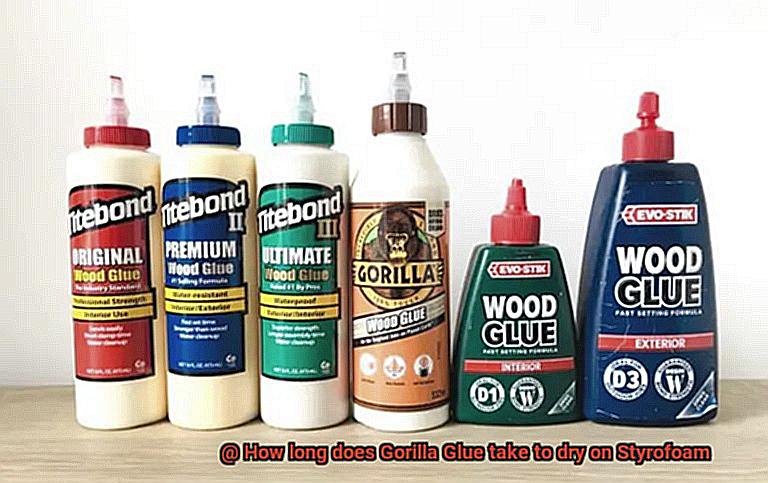
Too Much Glue Can Prolong the Drying Time
Applying too much glue when working with Styrofoam can be a sticky situation. In fact, it can actually prolong the drying time and leave you waiting longer than expected. So why does this happen? Let’s dive into the unique properties of Gorilla Glue, the polyurethane adhesive that is commonly used for bonding Styrofoam.
When Gorilla Glue is applied to Styrofoam, it does more than just stick things together. It starts to cure and create a strong bond, thanks to its expanding nature. This expanding feature helps create a tight and secure bond between materials. However, when we go overboard with the glue, this expansion can work against us.
Imagine pouring too much glue on your Styrofoam masterpiece. The excess glue seeps into the porous structure of the foam, creating a sticky mess. But that’s not all – it also hampers the drying process. You see, air plays a crucial role in helping the glue dry properly. But with all that excess glue blocking the way, air struggles to reach the adhesive and do its job effectively. This trapped air slows down the curing time and leads to a longer drying time.
But wait, there’s more. Excessive glue not only traps air but also leaves behind a tacky residue. This sticky situation takes even longer to dry and can result in an uneven surface. So if you’re aiming for smooth and quick-drying results, it’s crucial to apply just the right amount of Gorilla Glue.
To avoid these sticky situations, follow this simple rule: less is more. Apply a thin layer of Gorilla Glue onto the Styrofoam surface. This allows for proper drying and prevents excessive expansion of the glue. By using the right amount of glue, you ensure that air can reach the adhesive and aid in the drying process.
But what if you’ve already gone overboard with the glue? Don’t fret, there are steps you can take to speed up the drying time. First, grab a damp cloth or sponge and gently wipe away any excess glue. Be careful not to damage the delicate Styrofoam while doing this. Once the excess is gone, it’s time to bring in the reinforcements – warm air or a fan. Exposing the glued area to warm air or using a fan can help accelerate the drying process. Just remember to exercise caution when using heat sources like hairdryers, as excessive heat can damage both the Styrofoam and the glue.
Patience is key when dealing with excessive glue on Styrofoam. It may be tempting to rush the drying process, but trust me, taking shortcuts can lead to weaker bonds and potential damage. So, follow the instructions provided by Gorilla Glue and use the recommended amount of glue for Styrofoam. This practice will ensure your masterpiece dries in a timely manner while maintaining its strength.
Temperature and Humidity Impact Drying Time
Timing is everything when it comes to gluing. Whether you’re working on a craft project or repairing a broken item, waiting for the glue to dry can test your patience. However, drying time is not solely dependent on the type of glue used but also influenced by temperature and humidity. Understanding how these factors affect the curing process can help you achieve optimal results.
TEMPERATURE:
Temperature plays a crucial role in the drying time of Gorilla Glue on Styrofoam. To ensure efficient drying, it is recommended to work within the temperature range of 70°F to 90°F (21°C to 32°C). Higher temperatures accelerate the drying process, while lower temperatures slow it down.
When the temperature is too low, the glue takes longer to cure and may not bond effectively. Conversely, extremely high temperatures cause the glue to dry too quickly, potentially resulting in weaker bonds. Working within the recommended temperature range guarantees a strong and durable bond.
HUMIDITY:
Humidity levels also significantly impact the drying time of Gorilla Glue on Styrofoam. High humidity prolongs the drying process as moisture in the air hinders water evaporation from the glue. Conversely, low humidity facilitates faster evaporation and speeds up drying.
To achieve optimal results, work in a well-ventilated area with moderate humidity levels. This ensures that excess moisture does not interfere with the glue’s curing process.
ADDITIONAL CONSIDERATIONS:
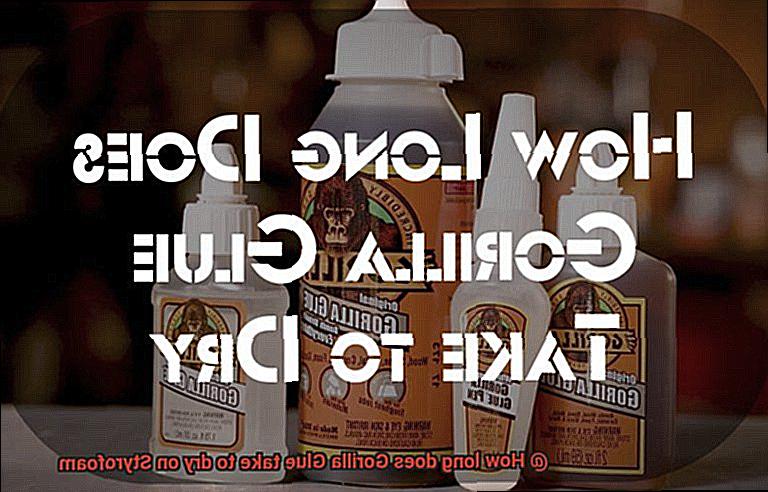
Consider any specific instructions provided by Gorilla Glue for drying on Styrofoam. The manufacturer may have additional recommendations regarding temperature and humidity levels for best results.
If working in an environment with extreme temperatures or humidity levels, take precautions such as adjusting the temperature or using dehumidifiers or fans to regulate conditions. This ensures a consistent and efficient drying process.
Additionally, the thickness of the glue application impacts drying time. Thicker layers take longer to dry compared to thin, even coats. Allow sufficient drying time before subjecting the glued Styrofoam to stress or pressure. Premature handling or exposure to moisture can compromise the bond and affect adhesive strength.
Proper Ventilation Can Help Speed Up the Process
Proper ventilation is not only a good practice in general, but it can also have a significant impact on the drying process of Gorilla Glue on Styrofoam. With its ability to facilitate evaporation and promote airflow, proper ventilation is an essential factor in speeding up the drying process. Let’s explore why this is the case.
First and foremost, Gorilla Glue contains solvents that need to evaporate for the glue to dry and create a strong bond. These solvents can linger and slow down the drying process if not properly ventilated. However, with proper ventilation, fresh air circulates around the glued area, expediting the evaporation of these solvents. It’s like a breath of fresh air for your glue, allowing it to dry more quickly and efficiently.
Secondly, Styrofoam is a porous material that has the tendency to trap moisture. When Gorilla Glue is applied to Styrofoam, this moisture can hinder the drying process. However, with proper ventilation, moisture has an avenue for escape. The fresh air from proper ventilation helps carry away the trapped moisture, allowing the glue to dry more effectively.
Creating a well-ventilated area for the glued Styrofoam is crucial for optimal drying. This can be achieved by placing it in an outdoor space with good air circulation or a room with windows that can be opened to let fresh air in. The constant flow of fresh air around the glued area creates an environment that promotes faster evaporation and drying.
For an additional boost in ventilation, consider using fans or other airflow devices. Positioning a fan near the glued Styrofoam helps disperse any stagnant air and promotes better airflow. As a result, the movement of air aids in carrying away moisture and speeds up the drying process even further.
It’s important to note that while proper ventilation can help speed up drying time, it’s still essential to follow the manufacturer’s instructions for Gorilla Glue application and drying. Different glue products may have specific recommendations on drying times and conditions, so make sure to refer to the instructions provided.
Allow Adhesive to Fully Dry Before Applying Pressure or Handling
Achieving a strong and durable bond is the ultimate goal when using Gorilla Glue on Styrofoam. To ensure this, it is absolutely vital to allow the adhesive to fully dry and cure before applying any pressure or handling the glued surfaces. Here’s why:
Firstly, allowing the adhesive to dry and cure ensures that it reaches its maximum strength. Gorilla Glue typically requires 24 hours to fully cure, but it is recommended to wait for at least 72 hours before subjecting the glued Styrofoam to stress or pressure. This extended drying time allows the glue to form strong bonds and ensures a durable connection.
Applying pressure or handling the glued Styrofoam before the adhesive has fully dried can weaken the bond. The pressure and movement can disrupt the bonding process and result in a less durable connection. By giving the glue enough time to dry and cure, you ensure that it has properly bonded with the Styrofoam and can withstand any stress or pressure.
Following the manufacturer’s instructions is crucial for achieving the best results. These instructions usually include applying a thin layer of glue, clamping the glued parts if necessary, and allowing sufficient drying time. By following these guidelines, you can achieve optimal bond strength and durability.
While the adhesive may feel dry to the touch after a few hours, it takes longer for it to fully cure and achieve its maximum strength. During this curing process, chemical reactions occur within the glue that enhance its bonding properties. Therefore, it is crucial to give the glue enough time to cure before applying any pressure or handling.
Temperature and humidity factors also play a role in the drying time of Gorilla Glue. Extreme temperatures or high humidity can affect the drying time and quality of the bond. It is advisable to keep the glued Styrofoam in a well-ventilated area with moderate temperature and humidity levels to ensure proper drying and curing.
Conclusion
When it comes to the question of how long Gorilla Glue takes to dry on Styrofoam, the answer is not as straightforward as one might think. The drying time can vary depending on several factors, such as the temperature and humidity of the environment, the thickness of the glue application, and even the specific type of Gorilla Glue being used.
Generally speaking, Gorilla Glue is known for its strong adhesive properties and durability. However, when it comes to bonding Styrofoam, there are some considerations to keep in mind. Styrofoam is a lightweight and porous material that can be easily damaged if not handled with care.
To ensure a successful bond between Gorilla Glue and Styrofoam, it’s important to follow the manufacturer’s instructions carefully. This typically involves applying a thin layer of glue onto one surface, then pressing the two surfaces together firmly. It’s recommended to use clamps or other means of securing the bond while it dries.
Now, let’s get back to our original question: how long does Gorilla Glue take to dry on Styrofoam? Well, here’s where things get interesting. The drying time can range from a few hours to several days. Factors such as temperature and humidity play a significant role in this process.
In ideal conditions – around 70°F (21°C) with low humidity – Gorilla Glue can dry within 2-4 hours. However, if you’re working in colder temperatures or high humidity environments, it may take longer for the glue to fully cure. In some cases, it could take up to 24 hours or more for a strong bond to form.
It’s crucial not to rush the drying process when working with Styrofoam and Gorilla Glue. Applying excessive force or stress before the glue has fully cured can result in a weak bond or even damage your project. Patience is key here.
In conclusion, the drying time of Gorilla Glue on Styrofoam can vary depending on several factors. It’s best to follow the manufacturer’s instructions and allow ample time for the glue to dry and cure properly.



